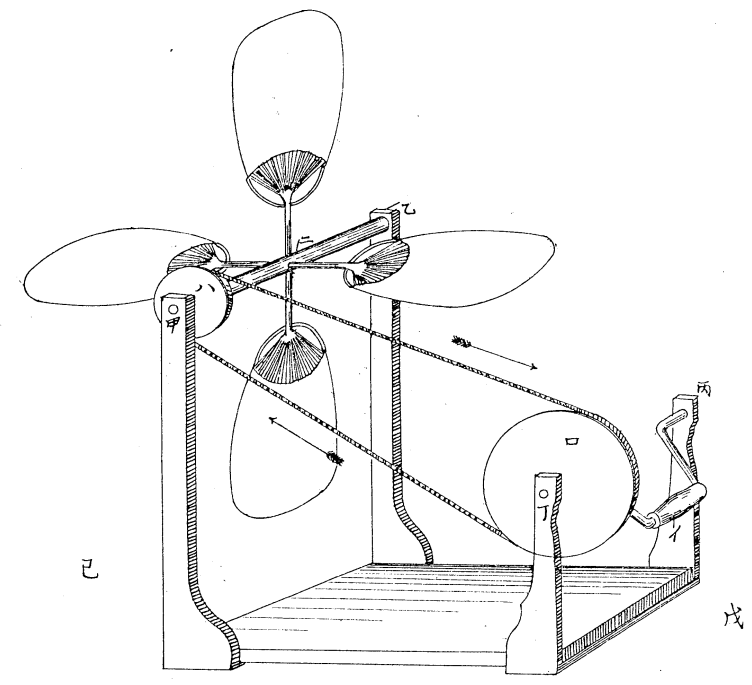
- Introduction: Hand-Powered Cooling Through Mechanical Craftsmanship
- What the Patent Drawing Shows
- How the Crank Mechanism Generates Airflow
- Benefits for Craft, Comfort, and User Experience
- Engineering & Design Considerations
- Patent Attorney’s Thoughts
- Application of the Technology: “Manual-Crank Oscillating Fan Platform”
- Final Reflections
Introduction: Hand-Powered Cooling Through Mechanical Craftsmanship
Uchiwa—traditional Japanese handheld fans—are known for their simplicity and elegance.
This patent illustrates a charming yet functional reinvention: a hand-cranked mechanical uchiwa apparatus.
Instead of manually waving the fan, the user turns a crank that drives an internal mechanism, automating the fanning motion while preserving the traditional shape and visual appeal of the uchiwa.
What the Patent Drawing Shows
The diagrams depict a handheld structure resembling a classic uchiwa, but behind the fan surface lies a compact mechanical system.
A side-mounted crank connects to a gear assembly, which translates rotational motion into a rhythmic back-and-forth waving pattern.
The fan blade is mounted on a pivot, allowing it to oscillate smoothly as the crank turns.
A stabilizing handle ensures comfortable gripping, while the internal gears are protected within a lightweight casing.
The device blends traditional form with discreet mechanical innovation.
How the Crank Mechanism Generates Airflow
Turning the crank rotates a primary gear, which drives a secondary gear linked to a cam or lever arm.
This arm moves the fan head in alternating directions, producing continuous airflow without the user needing to repeatedly swing the fan themselves.
By adjusting crank speed, the user can regulate airflow intensity.
The mechanism allows sustained cooling with minimal effort, making it useful during festivals, outdoor events, or even as a novelty teaching tool for mechanical motion.
Benefits for Craft, Comfort, and User Experience
This apparatus maintains the cultural charm of an uchiwa while removing physical strain associated with manual fanning.
It introduces a playful interactive element, making it enjoyable for children and adults alike.
The device is ideal for hot summer activities, performances, or educational demonstrations illustrating how rotational motion becomes oscillation.
It offers both usability and a sense of nostalgic craftsmanship brought into the modern age.
Engineering & Design Considerations
Gear ratios must balance smooth oscillation with user effort.
The pivoting mechanism requires low friction to avoid hand fatigue.
Materials should be lightweight yet durable, especially around the crank and gear teeth.
The fan head must be securely mounted to withstand repeated oscillations.
Safety considerations include enclosing gears and ensuring fingers can’t be caught in moving parts.
The overall design must feel natural to hold, just like a traditional uchiwa.
Patent Attorney’s Thoughts
When tradition meets motion, new delight emerges.
This invention keeps the familiar silhouette of the uchiwa while inviting the user into a small mechanical dance—where each turn of the crank becomes a gesture of breeze and craft.
Application of the Technology: “Manual-Crank Oscillating Fan Platform”
Purpose
To automate the motion of a traditional Japanese fan using a hand-cranked oscillating mechanism.
System Components
- Crank handle
- Gear assembly
- Cam or lever arm
- Pivot-mounted fan blade
- Protective casing and handheld grip
Operational Flow
- User turns crank.
- Gears rotate and drive cam mechanism.
- Fan head oscillates back and forth.
- Airflow is generated continuously.
- Cranking speed adjusts breeze intensity.
Final Reflections
This device preserves cultural aesthetics while enhancing usability, transforming a simple fan into a miniature mechanical performance in the user’s hand.
Disclaimer: This content is an AI-generated reinterpretation based on a patent drawing.
It is provided for educational and cultural purposes only, and not as legal advice.
↓Related drawing↓




